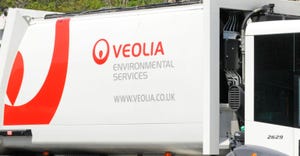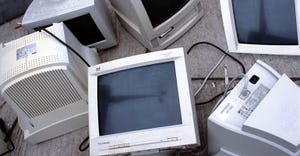Fire Safety is a Team Sport
October 20, 2021

Ryan Nolte
Fire is the most common type of workplace emergency, which makes practicing fire safety that much more critical. We all want to get home to our loved ones at the end of each day in the same condition we started the day. It’s important for us as individuals, and as a collective, to do our part to reduce the risk of a workplace fire at our facilities and review what we need to do if a fire occurs.
October is Fire Prevention Month, so now is the perfect time to review your organization’s Fire Prevention Plan and discuss what to do during a fire emergency with your team.
Let’s start with the basics: What exactly is a fire prevention plan? A fire prevention plan is a step-by-step guide to reduce the risk of a fire starting in a workplace. According to OSHA, a fire prevention plan must include:
A list of all major fire hazards, proper handling and storage procedures for hazardous materials, potential ignition sources and their control, and the type of fire protection equipment necessary to control each major hazard.
Procedures to control accumulations of flammable and combustible materials.
Procedures for regular maintenance of flammable and combustible materials.
Procedures for regular maintenance of safeguards installed on heat-producing equipment to prevent the accidental ignition of combustible materials.
The name or job title of employees responsible for maintaining equipment to prevent or control sources of ignition or fires.
The name or job title of employees responsible for the control of fuel source hazards.
Essentially, your fire prevention plan must include steps to properly identify fire hazards, reduce fires from occurring, regularly maintain fire suppression equipment, and measures to ensure the previously listed steps are regularly completed.
Reducing the risk of fire-related injuries or destruction of property comes down to two things: preventing a fire from happening in the first place and training your team on what to do during a fire emergency before a fire happens. Fire safety is a team sport. Ensure that your team is familiar with your facility’s fire prevention plan, knows how to identify fire hazards, and understands what to do if a fire occurs.
Sounds easy enough, right? Well, the unfortunate reality is that common, everyday mistakes can lead to real danger. In 2019 alone, one person died from a workplace fire every three and a half days. By training, auditing, and reviewing your plan regularly, and involving workers in all facets of your fire safety plans, you can play an active role in preventing a fire at your facility and potentially save a life.
Fire safety isn’t something you pay attention to one month of the year. Build safety into your facility’s culture, and you’ll reap the rewards. Let’s take a look at some ways to prevent a fire from happening.
Fire Prevention Tip #1: Keep flammable materials away from ignition sources.
Fire occurs when oxygen, material/fuel, and an ignition source that provides enough heat for the material to combust, all combine. The fire will go out when you remove one of these elements from the equation.
“Keep your ignition sources separated from your fuel sources, and you’ll never have a fire. And if you don’t have large quantities of fuel, you’ll never have a large fire,” says former Battalion Chief Kenn Kunze of IC Fire Prevention. Regularly completing a Fire Safety Checklist to ensure fuel and ignition sources are appropriately stored is vital. Kunze recommends assigning someone responsibility to complete a Fire Safety Checklist and then auditing them.
Fire Prevention Tip #2: Diligently inspect inbound material for fire hazards.
Your facility’s Inbound Load Inspector plays an important role when it comes to fire safety. When your facility receives a load:
Place the load away from a shredder or baler until it is inspected.
The Inbound Load Inspector looks for potential fire hazards, such as propane tanks.
Remember to look for “heavies” hidden inside larger items.
ISRI has reported an increase in facility fires due to lithium-ion batteries. Lithium batteries are susceptible to thermal runaway, a reaction that can result in rapid heat release or combustion. When lithium batteries are cracked, damaged, or overheated, they are at risk for thermal runaway. Train your Inbound Load Inspector to look for lithium batteries in and on everyday items, like car wheels. Store lithium batteries away from flammable material and in a fire-resistant container.
Fire Prevention Tip #3: Store materials properly.
Train your team to get in the habit of excelling at general housekeeping. Too often, materials are stored improperly, and flammable or combustible materials are too close to evacuation routes. These seemingly common, everyday mistakes might not appear like a big deal at the time, but they can lead to real danger.
Flammable and/or combustible liquids and aerosols need to be stored in proper cabinets or kept outside. Keep flammable and/or combustible liquids and aerosols away from sparks, flames, or heat sources. Do not place flammable and/or combustible liquids and aerosols near exits, stairways, or areas for entrance and egress.
Hold each other accountable: You’re never too busy to store materials correctly and prevent a fire. If you see something that isn’t properly stored, fix it or bring it to your supervisor’s attention. Staying silent and doing nothing about a fire risk isn’t going to solve the problem.
Throughout the month, ISRI is sharing actionable fire prevention tips that you can start using right away to reduce the risk of a workplace fire. Resources can be found here.
Dr. Ryan Nolte is the director of safety outreach for the Institute of Scrap Recycling Industries, Inc. (ISRI).
You May Also Like


